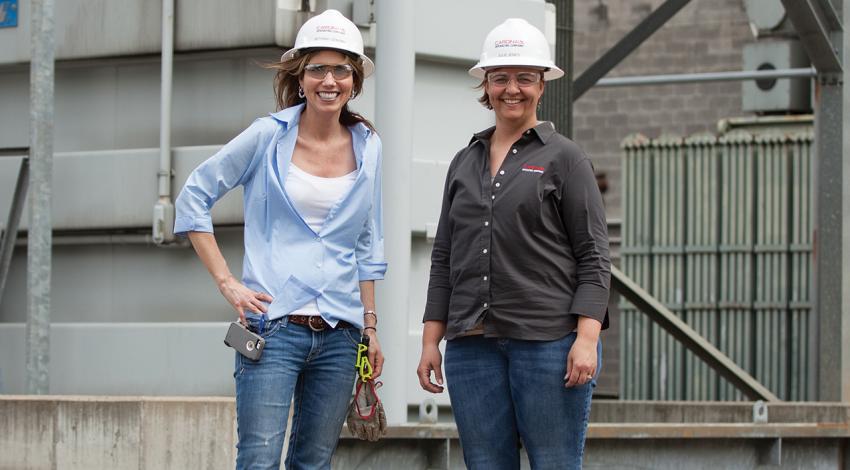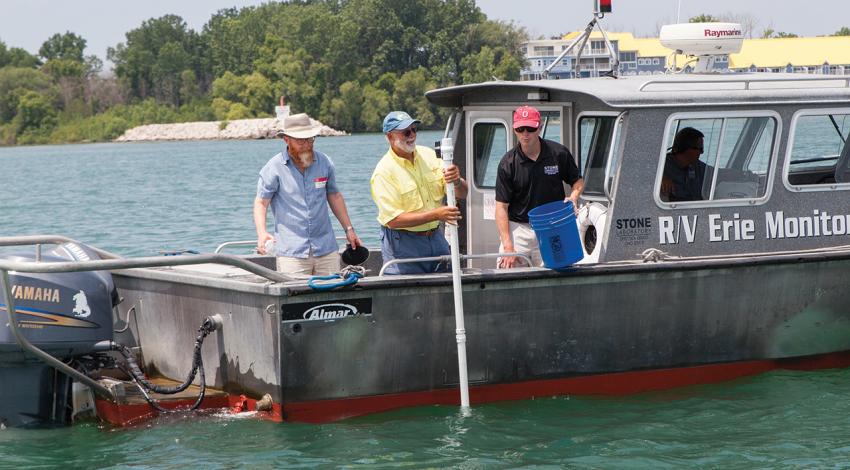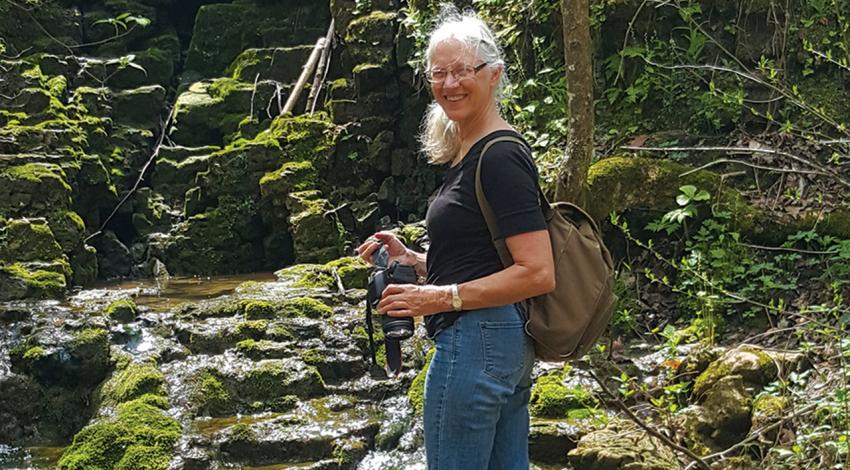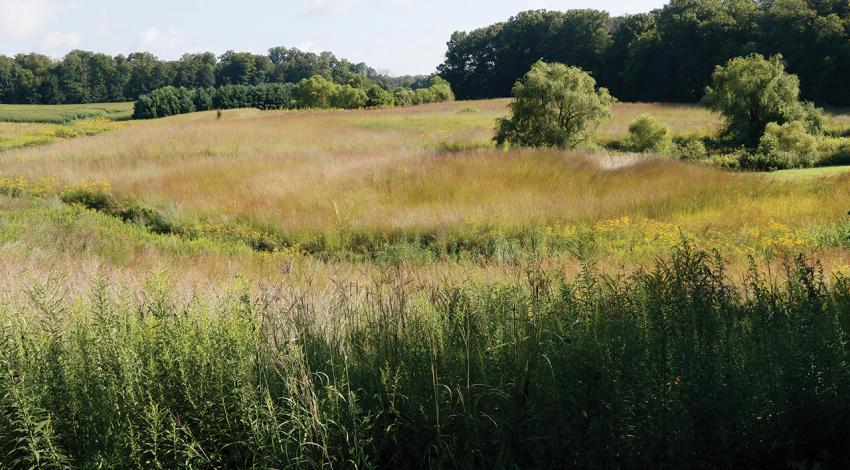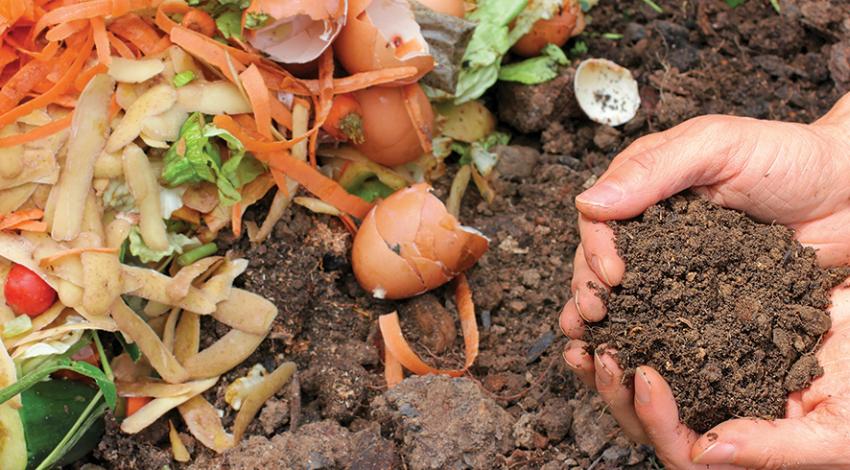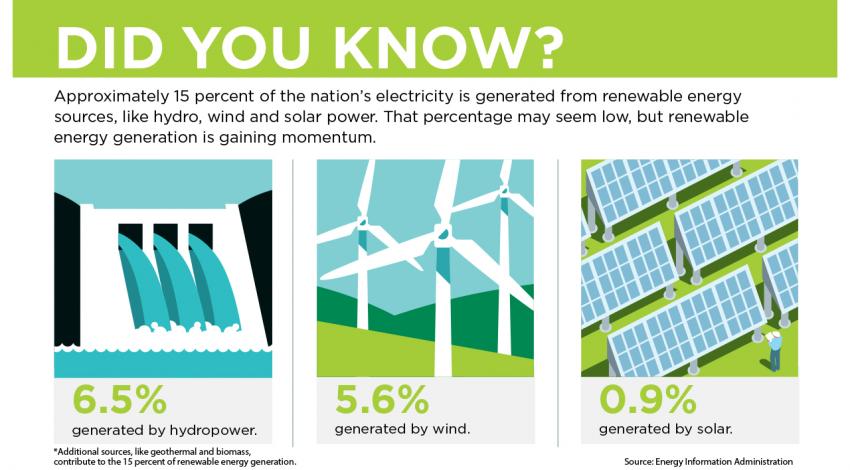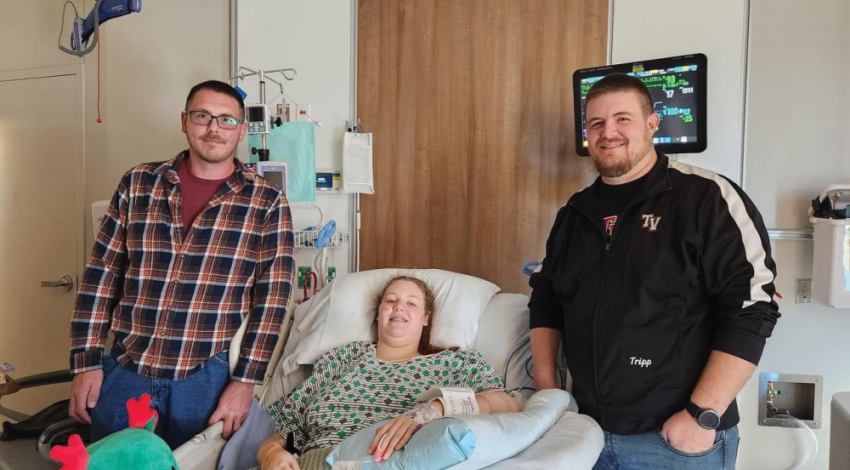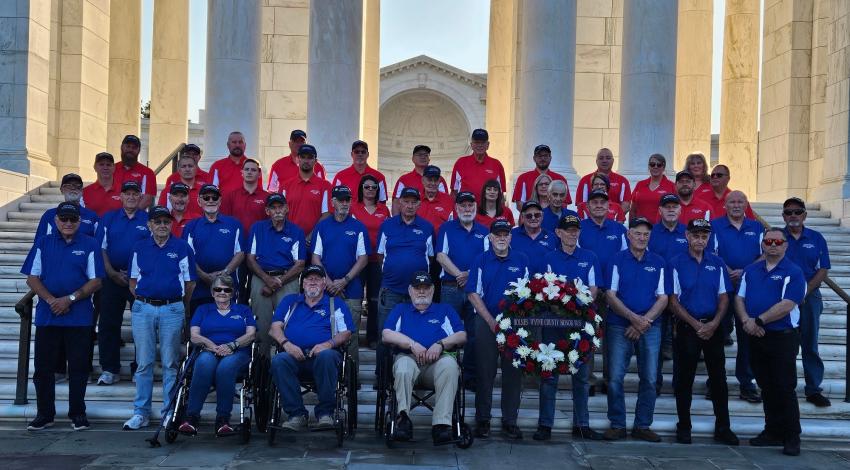environment
Part of the process of removing sulfur dioxide (SO2) from emissions at the Cardinal Power Plant involves the use of limestone. The process is complicated and can be messy, and when heavy deposits build up in the scrubber, the entire generating unit must come offline.
An employee at the plant suggested adding a chemical to the process that not only would allow for less limestone to be used, it would reduce those deposits in the scrubber — meaning lower maintenance time and cost.
It’s no secret that Lake Erie’s recent algae blooms have a small army of scientists and conservationists working nonstop to remedy its troubles. But a little-known faction has been feeding valuable data to those problem-solvers: charter captains.
“We first started with the Ohio EPA,” says Dave Spangler, longtime captain and vice president of the Lake Erie Charter Boat Association (LECBA). The EPA, he says, sent lab technicians wading near shore to collect samples. “The better part of the Western Basin just wasn’t getting covered,” he says.
Ask Nancy Stranahan, “What’s the point of preserving plain old woods?” and you’re certain to get an earful.
“I’d say guilty as charged, except for the word ‘plain,'” Stranahan says, explaining that southern Ohio’s hardwood forests are the last best chance to save an ecosystem that has one of the highest levels of biodiversity in the world. “The fact that 100,000 multicellular native organisms are at stake takes ‘plain’ out of the discussion.”
Not many people get excited upon seeing a rat, at least, not in a positive way. But there is a group of folks in southern Ohio who go absolutely giddy when spotting one. They are wildlife researchers, and the object of their ardor is the Allegheny woodrat, a state-endangered species.
I had the opportunity to tag along with this group of dedicated wildlife biologists on a perfect early-fall day. The prior evening, they had set more than 50 live traps in a steep, heavily wooded valley in the sprawling Edge of Appalachia preserve in Adams County, near the Ohio River.
North America’s prairies once stretched from the foothills of the Rocky Mountains east into western Ohio, a staggering 1 million square miles or more of native grasslands that covered a third to nearly half of our country.
But what took millennia to develop disappeared in only half a century. The transformation began in 1833, when John Lane Sr. created the polished-steel, self-scouring plow, which could penetrate heavy prairie soils. A fellow blacksmith then improved upon Lane’s original design and marketed the new plow aggressively. That second blacksmith was John Deere.
Dairy farming is not an easy life — the hours are long, milk prices are volatile, and smaller farms are rapidly disappearing as the industry consolidates. Kyle Sharp, the owner of Stoutsville-based Sharp Family Dairy, knows this all too well. His day starts at 4 a.m., and it’s often past 8 at night by the time he’s finished milking his herd of just over 70 cows.

